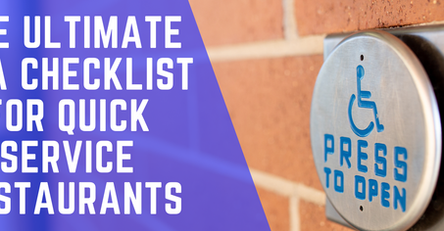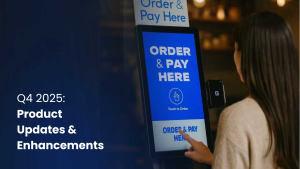Pros & Cons of Fast Food Kiosks in 2022
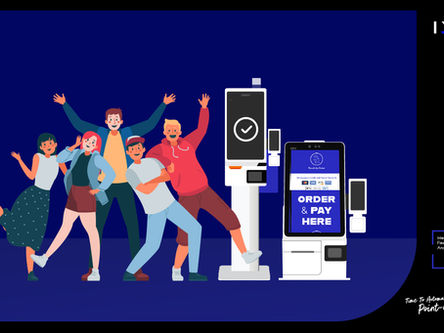
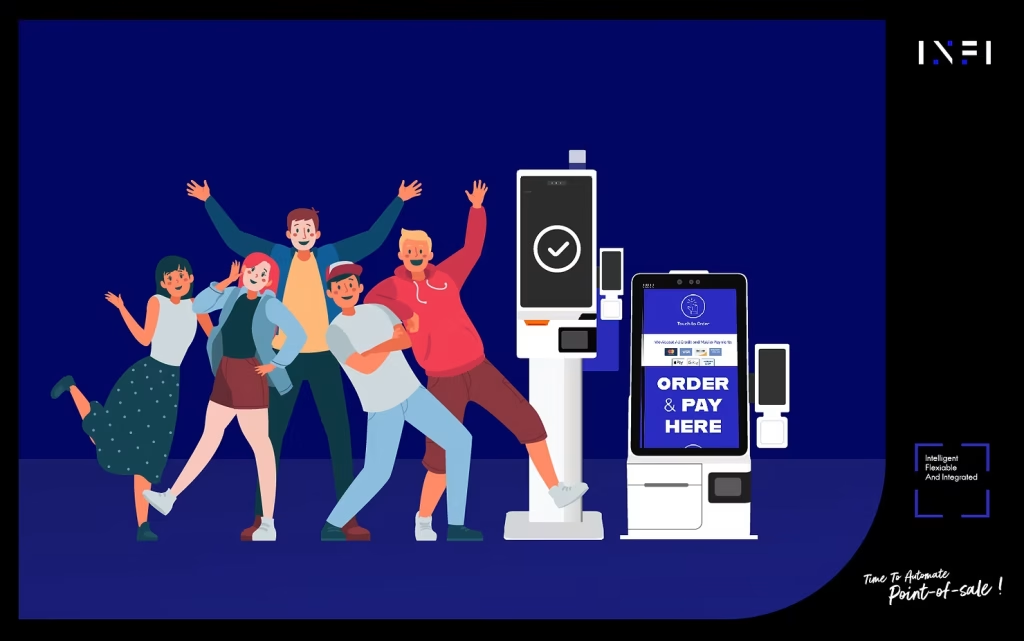
For quick-service restaurants (QSRs), the front-end experience is where money is made. The front end is where upselling happens and customer satisfaction increases or decreases. To streamline ordering and front-end efforts, many companies are turning to self-service kiosks in place of employee-centered serving.
As customers begin to embrace this technology, self-ordering kiosks are quickly becoming a mainstay in the fast food industry. McDonald’s is leading the way, with over 70,000 self-service units installed around the globe as of 2019.
By 2024, the self-serve kiosk market is projected to reach $30.8 billion in revenue. In many ways, the COVID-19 pandemic pushed companies to embrace these systems as they face challenges like worker shortages, social distancing, and dining room closures. In the current climate, digitalization has been essential in making restaurants safe and successful.
Soon, all fast food chains will incorporate some sort of kiosk into their ordering process as they seek to maximize their profits and improve the customer experience. While fast food kiosks can offer many benefits, there are a few disadvantages. In this article, we’ll break down some of the pros and cons of using kiosks as we head into 2022.
Pros of Fast Food Kiosks
Kiosks have benefits for the fast food restaurant itself, and for the customers who use them. Let’s take a look.
For Restaurants
By improving operations, technology investments can lead to better overall customer experience. Here are just a few benefits that touchscreen kiosks can offer restaurants.
Reduced labor costs: The staffing flexibility that a restaurant kiosk ordering system provides is one of the biggest perks. When customers can enter their own order via kiosk, the restaurant doesn’t have to hire an employee to take orders, which reduces labor costs. Additionally, kiosks never call in sick, so you don’t have to worry about filling a shift to ensure someone is on hand who knows how to take orders.
Increased kitchen capacity: Kiosks bring in more orders per hour than an employee can. With kiosk ordering in place, the employees who would normally take orders are free to fulfill the orders in the kitchen. More hands making orders in the kitchen means shorter wait times for customers, which is a must for modern restaurants.
Increased revenue: The bottom line is the most important thing to most fast food restaurants, and kiosks increase revenue by encouraging upselling. Customers no longer feel judged if they upgrade their fries or add on a milkshake. One report from Modern Restaurant Management finds that kiosks show a 21% increase in average order size, resulting in a spend of about $5 more per transaction. Kiosks also allow more orders per hour, which also increases revenue.
Easier marketing and deal promotion: You don’t have to remind kiosks to promote the current special offer or sale item. They can ask the customer every time if they “want fries with that,” and that makes it easier to market the products a restaurant wants to sell. If a new promotion is available, all the restaurant owner has to do is add it to the point-of-sale platform, which is connected to the ordering kiosk, and every customer who puts in an order gets a notification of the special.
Fewer ticket errors: Human error is always a risk when putting orders into a system. But when the customers input their own orders, they are less likely to make an error — and that error is their responsibility, not a staff member’s. Since 72% of customers expect to be able to customize their orders, the kiosk makes it easier to ensure accuracy. The customer’s exact order, whether it includes extra pickles or no mayonnaise, is what the kitchen receives.
For Customers
Customers also benefit from kiosks. Research shows that 65% of customers are more likely to visit a restaurant if it has self-service kiosks, and 30% indicate they prefer ordering this way. Here are some of the reasons why.
More time for menu exploration: When a customer is standing in front of an employee, they may feel rushed to make a decision. This does not provide the time to really browse the menu and take in the options. At a kiosk, customers can explore the menu items at their own pace. This extra time helps them get exactly what they want, and can be particularly helpful at a restaurant they have not visited before.
More consistent promotional offers: The customer is always aware of the current specials, deals, and discounts when they order from a restaurant kiosk. This consistency may help them save money or get a better order than what they originally thought they wanted. When customers order at a counter, they have to rely on an employee to remember to inform them of special offers.
Faster orders: People go to fast-casual and quick-service restaurants because they are in a hurry, and kiosks reduce wait times and improve the overall speed of ordering. Because more staff is on hand in the kitchen, the customer may also get their order in hand more quickly.
For more about the benefits of self-ordering kiosks, read our blog: 7 Reasons Why Self-Ordering Kiosks Are So Important to Quick-Service Restaurants
Cons of a Fast Food Kiosk
Food-ordering kiosk technology isn’t perfect, and there are some potential shortcomings both for the restaurant and the customer. Before investing in a system, wise restaurant owners should make sure they fully understand these drawbacks and the potential impact on their business.
For Restaurants
There are some potential downsides to using restaurant kiosks, including high upfront costs and the learning curve associated with incorporating them. Restaurant owners should consider the following when deciding to invest in a kiosk system.
Kiosks are expensive: While they do increase revenue and per-ticket sales, the upfront cost of a kiosk system can be high. According to QSR Magazine, the cost per kiosk is about $5,000 for all of its components, including the machine itself, credit card reader, software, and hardware. Since most restaurants need more than one kiosk to make the conversion, the price can get quite steep.
Potential downtime: All technology can break, and the automation benefit of a kiosk is lost if it goes down. This can leave both workers and customers scrambling to create orders without the machine, especially if fewer workers are trained to take orders once the restaurant switches to self-service kiosks.
Change of workflow: Transitioning from staff taking orders to customers placing their own orders using a freestanding ordering kiosk can be a challenge for established food service companies. It will take time to teach the team members a new workflow as the company adjusts to the new style of ordering.
For Customers
While many customers report that they like using kiosks, there are some potential drawbacks for them as well.
Inventory mismanagement: One of the perks of fast food ordering kiosks is the ability to manage inventory within the system. However, this does require the team to use the system properly. Customers may become frustrated if the kiosk tells them a particular menu item is available, when it isn’t.
Potential downtime: Downtime is an inconvenience for customers as well. If the restaurant’s self-checkout system isn’t functioning due to software problems, or internet or power outages, the customer can’t order quickly and enjoy the other perks of a kiosk. If a restaurant only uses kiosks, an internet outage could mean the inability to place an order at all.
Lack of human interaction: A kiosk can’t tell a customer which menu item is their personal favorite, or whether the produce is fresh today. Some customers prefer the social interaction of ordering with a person over a self-ordering kiosk.
Fast Food Kiosks Are the Wave of the Future, so Make Sure You’re Ready
The fast food kiosk streamlines restaurant operations and helps fast food and quick-service restaurant chains increase their productivity and sales. After the initial investment, kiosks have a number of benefits, including a smoother workflow, lower overhead, and reduced labor costs.
Customers are getting on board as well. They enjoy these interactive point-of-sale kiosks and the improved order accuracy that comes along with them. The COVID-19 pandemic has hastened the move toward digitalization, and customers are embracing these convenient and responsible ordering options.
Whether you are starting a new restaurant or looking to modernize an existing one, self-service kiosks are vital. If your restaurant is considering adding this technology to your workflow, contact INFI for a free demo of our self-service kiosk system.
About infikiosk
Related Posts
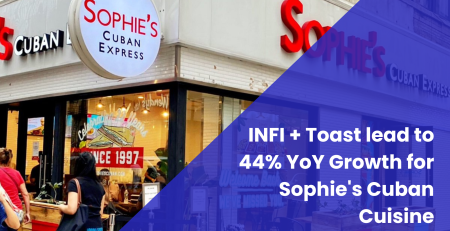
Case Study: Sophie’s Cuban Cuisine Drives Revenue Growth with Advanced Self-Order Kiosk Technology
Client: Sophie’s Cuban Cuisine Industry: Fast Casual Dining Locations: 11 Point of Sale: Toast Key Stakeholder: George J. Cestero, COO & IT/Digital Marketing Director...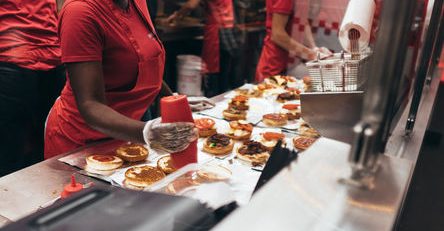
6 QSR Trends That Are Changing the Restaurant Industry
Today, QSR establishments continue to see ongoing changes in response to social and technological developments. We’ve compiled six of the...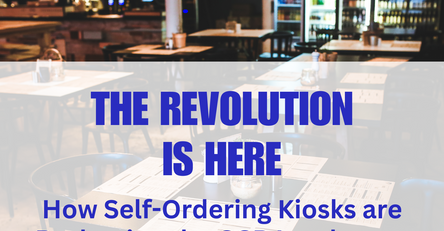
The Revolution is Here: How Self-Ordering Kiosks are Reshaping the QSR Landscape
One particular innovation has started to significantly reshape the QSR industry landscape—self-ordering kiosks.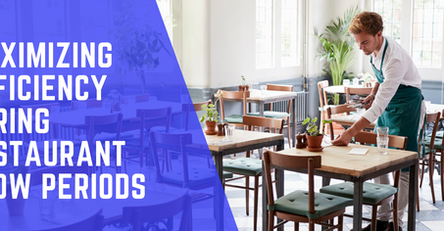
Maximizing Efficiency During Restaurant Slow Periods: A Digital Approach
This blog post explores how to navigate these slow periods effectively, focusing on digital investments and smart strategies to enhance...
Navigating the Future of QSRs: The Role of Kiosks and Technology
We went through these articles and skimmed through the almost 500 comments to get some insight on how people are...
How to Open a Pizza Place: Step-by-Step Guide & Tips
If you’re considering starting a pizza place, follow this comprehensive guide to ensure your success.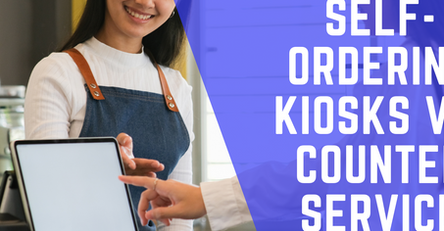
Comparing Self-Ordering Kiosks vs. Traditional Counter Service: Which Is Right for Your Restaurant?
This article delves into the pros and cons of self-ordering kiosks versus traditional counter service to help you determine which...
Top Marketing Ideas for Quick Service Restaurants (QSRs)
QSRs need to leverage creative approaches to boost brand visibility and drive sales. Here are some top marketing ideas...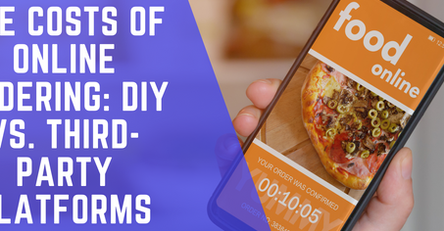
The True Costs of Online Ordering: DIY vs. Third-Party Platforms
As online ordering continues to reshape the restaurant industry, businesses face a crucial decision: build an in-house ordering system or...